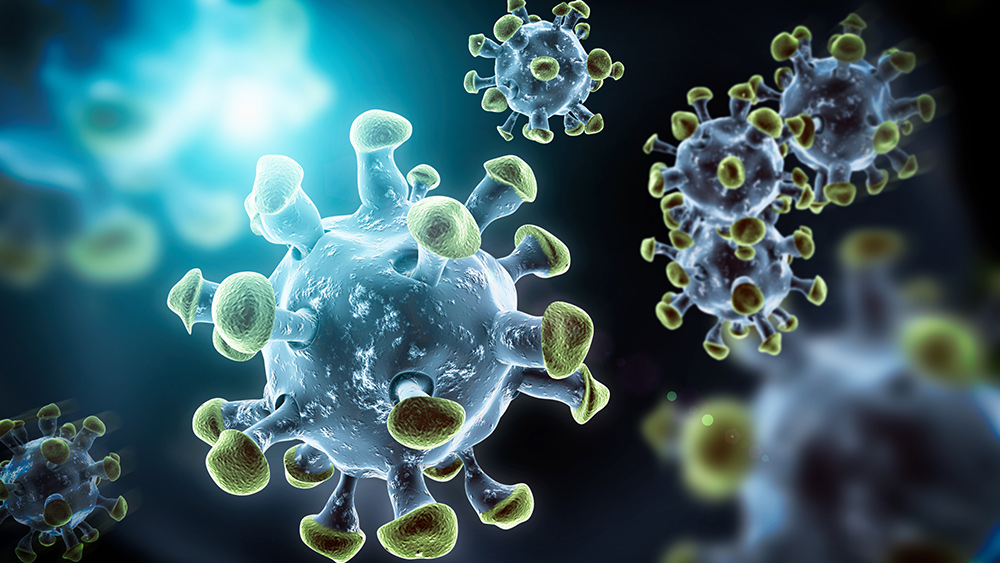U.S. Navy will deploy “hospital ships” in the fight against coronavirus
03/22/2020 / By Ralph Flores

As the coronavirus pandemic continues to spread across America – with caseloads surpassing 7,000 on Wednesday – the U.S. Navy is looking to send its two hospital ships into action.
In a press briefing, President Donald Trump said that the USNS Comfort (T-AH-20), currently moored in Norfolk, Virginia, will head for New York City, while the USNS Mercy (T-AH-19), homeported in San Diego, will be deployed to the West Coast.
“We’ve already given orders to the Navy… to lean forward in terms of getting them ready to deploy,” Secretary of Defense Mark Esper told reporters.
The USNS Mercy will be the first to be prepared for deployment, which will take in days, according to Pentagon spokesman Jonathan Hoffman. Currently, the USNS Comfort is undergoing maintenance and will see action in the coming weeks. Prior to the ships’ activation, medical staff and active duty units, as well as medical equipment, will be brought aboard. (Related: US coronavirus death toll blows past 100, with 7,300 infected while global infections surpass 200,000 … and many Americans still remain in a state of total denial.)
Hospital ships deployed to reduce pressure on coastal hospitals, not take in COVID-19 cases
However, defense officials pointed out that the hospital boats will be deployed to ease the burden on hospitals in coronavirus-stricken areas. Sources familiar with the matter told USNI News that the ships will take in trauma cases and other combat casualties, so field hospitals can open up more rooms for COVID-19 cases.
“They don’t have necessarily the space, the segregated spaces, you need to deal with infectious diseases,” Esper added. “So, one of the ways by which you could use either field hospitals, the hospital ships or things in between, is to take the pressure off of civilian hospitals when it comes to trauma cases, is to open up civilian hospital rooms for infectious diseases.”
The statement was echoed by Joint Staff surgeon Air Force Brig. Gen. Paul Friedrichs, as he detailed how the ships can support civilian hospitals.
“If, for example, a community has a large outbreak and there’s a need for emergency room support or trauma support, a hospital ship is perfectly designed to do that,” Friedrichs said. “It’s hard to get the hospital ship to St. Louis, but along the coasts, it is an option to use.”
Before the Navy converted them into hospital ships, both the USNS Mercy and the USNS Comfort started out as oil tankers. The floating hospitals can accommodate 1,000 patients each and have a crew of nearly 1,300 Navy personnel and civilian medical staff. Both ships have been deployed to New Orleans after Hurricane Katrina, to Puerto Rico after Hurricane Maria, and even to disaster-stricken regions in Central and South America.
A challenging task
Outfitting the two ships also comes with its unique set of challenges. Most of the reserve personnel, for instance, will come from civilian medical facilities, and bringing them would certainly pull them out – something that the Defense Department is carefully looking into.
“All of those doctors and nurses either come from our medical treatment facilities or they come from the reserves, which means civilians,” Esper said. “What I don’t want to do is take reservists from a hospital where they are needed just to put them on a ship to take them somewhere else where they’re needed.”
The Pentagon, on its part, reiterated that the two will be “ready, willing and able” to support civilian hospitals.
“We just want to make sure that the conversation that is being had is informed by the facts of what is possible, what is not, and what those trade-offs are,” Hoffman added.
Learn more about the coronavirus pandemic by following Pandemic.news.
Sources include:
Submit a correction >>
Tagged Under:
coronavirus, covid-19, disaster, Diseases, emergency medicine, floating hospitals, hospital ships, Hospitals, medical facilities, military, military assistance, outbreak, pandemic, President Trump, US Navy, USNS Comfort, USNS Mercy
This article may contain statements that reflect the opinion of the author
RECENT NEWS & ARTICLES
Infections.News is a fact-based public education website published by Infections News Features, LLC.
All content copyright © 2018 by Infections News Features, LLC.
Contact Us with Tips or Corrections
All trademarks, registered trademarks and servicemarks mentioned on this site are the property of their respective owners.





















